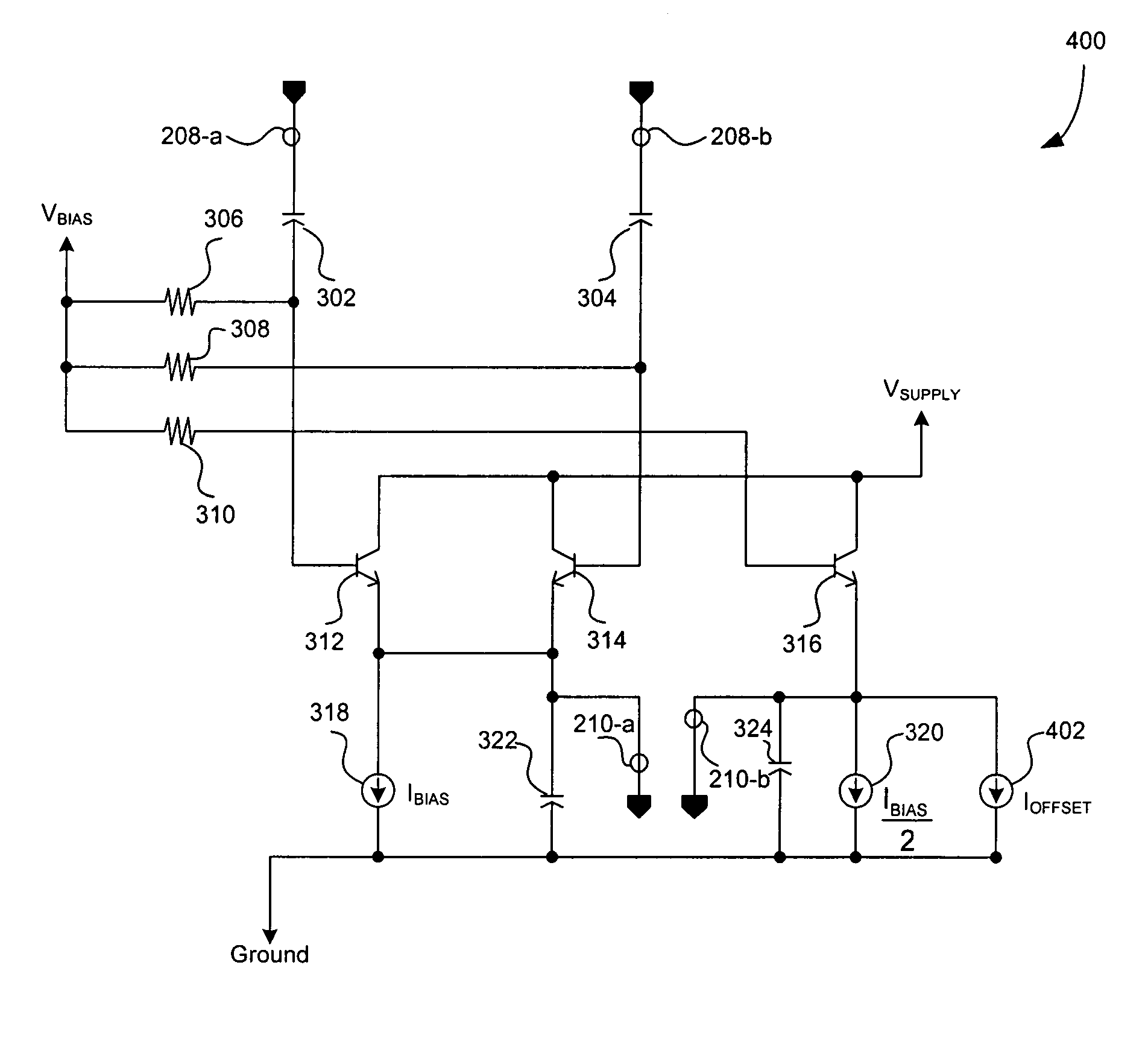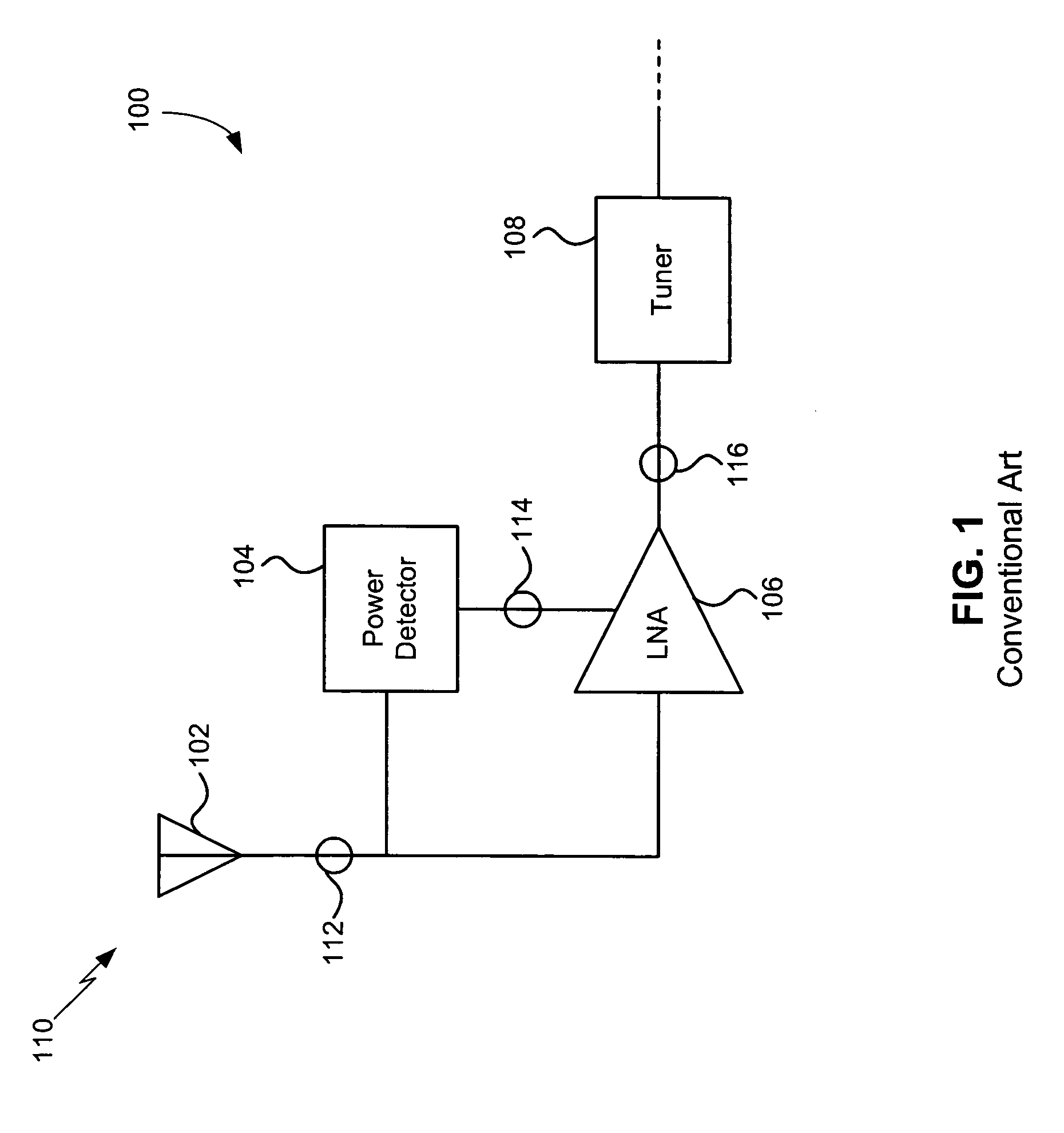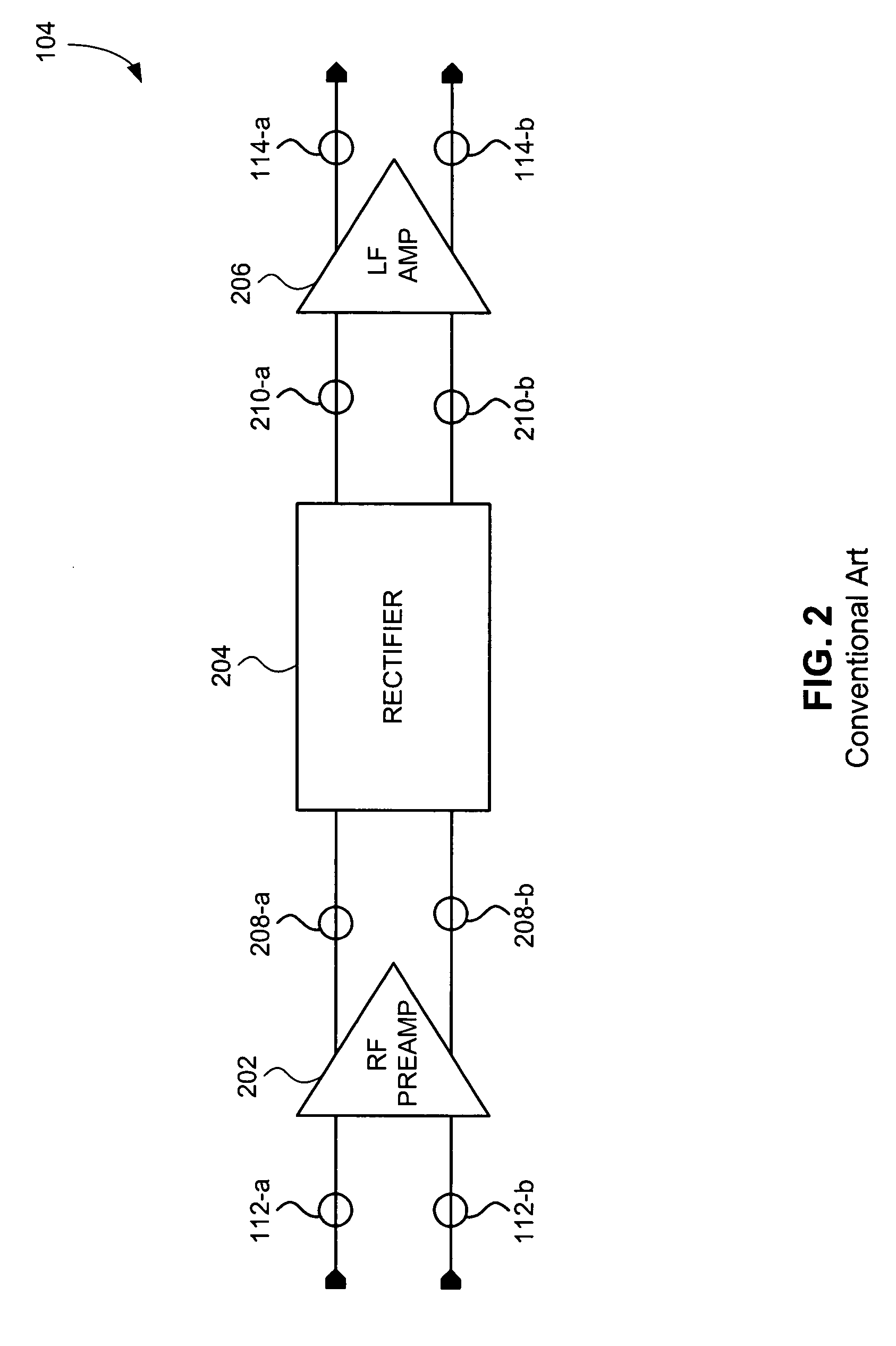High precision power detector
a high-precision, power detector technology, applied in the direction of electric variable regulation, process and machine control, instruments, etc., can solve the problems of limiting the range of input amplitudes that can be accurately measured, reducing the bandwidth of input signals, and limiting the precision of power detectors
- Summary
- Abstract
- Description
- Claims
- Application Information
AI Technical Summary
Benefits of technology
Problems solved by technology
Method used
Image
Examples
Embodiment Construction
[0015]FIG. 1 illustrates the front-end of a conventional wireless receiver 100. The conventional wireless receiver 100 includes an antenna 102, a conventional power detector 104, a low noise amplifier (LNA) 106 and a tuner 108. The antenna 102 receives a transmitted wireless signal 110 and provides a received signal 112 to the conventional power detector 104 and the LNA 106. The LNA 106 amplifies the received signal 112 and provides an amplified received signal 116 to the tuner 108. The transmitted wireless signal 110 and the received signal 112 are typically radio frequency (RF) signals.
[0016]The tuner 108 operates optimally when the amplitude of the amplified received signal 116 is constant. The variable gain of the LNA 106 is adjusted to compensate for fluctuations in the amplitude of the received signal 112 to provide an amplified received signal 116 having constant amplitude. The variable gain of the LNA 106 is properly adjusted through the use of the conventional power detecto...
PUM
 Login to View More
Login to View More Abstract
Description
Claims
Application Information
 Login to View More
Login to View More - R&D
- Intellectual Property
- Life Sciences
- Materials
- Tech Scout
- Unparalleled Data Quality
- Higher Quality Content
- 60% Fewer Hallucinations
Browse by: Latest US Patents, China's latest patents, Technical Efficacy Thesaurus, Application Domain, Technology Topic, Popular Technical Reports.
© 2025 PatSnap. All rights reserved.Legal|Privacy policy|Modern Slavery Act Transparency Statement|Sitemap|About US| Contact US: help@patsnap.com



